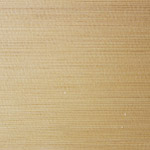



Selection flow of wooden bathtub
Flow 1
Flow 2
Flow 3
Kiso Hinoki
The Kiso Hinoki is said to have a finer grain compared to other Hinoki of other producing districts.
This is because of the growing conditions such as the severe cold of winter in the Kiso area in Nagano Prefecture, the large amount of rain, and the severity of the slope of the mountain. As it grows slowly over a long time, the grain becomes finer and of better quality, making the wood valuable.
Kiso Hinoki is famous for its high quality, has a good tint and is shiny, making it desirable as a building material and for furniture as luxury wood because its appearance is beautiful after processing.
Among all, the Kiso Hinoki is especially characterized by its neat color and dense wood grain.
Aomori Hiba
The Hiba tree from Aomori Prefecture is known as “tree of life” for its lifespan and resilience.
Hiba is known as one of the three largest trees in Japan alongside Hinoki and Sugi. It's considered a first-class building material for pagodas and shrines because it naturally resists rot and mold, which is particularly valuable in humid summers. A compound called Hinokitiol that's found in Aomori Hiba trees also banishes bugs like termites or spiders.
Prized for their woodsy, calming scent and pest-resistant lumber, Hiba trees are a time-honored building material as well as an excellent aromatherapy ingredient.
Sawara
It is beautiful, similar to Hinoki in color with a pretty wood grain, and it is an excellent material to make sushi okes because of its strong resistance to rain, moisture, and acid. In addition, because it is only second in lightness to Kiri wood, it has a number of applications.
In addition to the fact that there are few woods with fragrances like Hinoki and Asunaro, Sawara also has a sterilizing effect, making it useful for making wooden containers for cooked rice, ladles, and okes in addition to wooden baths.
Kouyamaki
The wood grain is beautiful, the color is a yellowish white, it is shinier than Hinoki and is resistant to moisture for a long period of time. As indispensable material in the production of wooden baths and other such products. Kouyamaki has been used as the most appropriate material for making sinks, ships, bridges and the like.